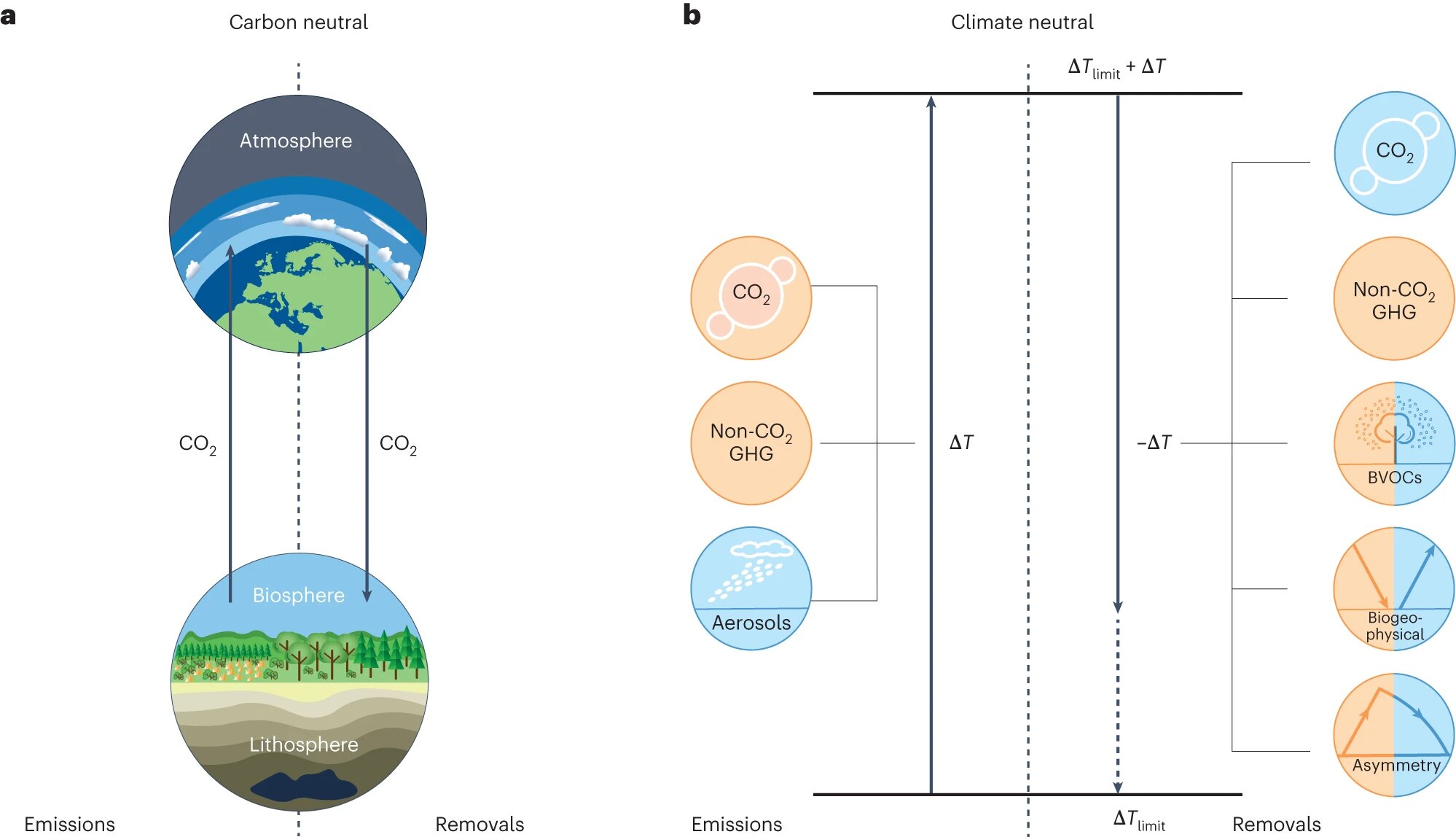by Ulrich von Lampe, Mercator Research Institute on Global Commons and Climate Change (MCC) gGmbH
While a trend reversal in global CO₂ emissions is still yet to come, more and more countries are announcing the goal of “net zero” by mid-century.
However, researchers now warn that behind such plus–minus strategies lurks a misunderstanding: the idea of simply removing emissions one-for-one to effectively “undo” them is at odds with the nature of Earth systems. The article, co-authored by the Berlin-based climate research institute MCC (Mercator Institute on Global Commons and Climate Change), is published in the journal Nature Climate Change.
The interdisciplinary research team investigated what this seemingly balanced combo deal with the atmosphere means for the Earth’s temperature. “If climate policy sets its sights not on absolute zero, but only on net zero with a view to what is feasible, then it must also keep the Earth systems in mind,” says Sabine Fuss, head of the MCC working group Sustainable Resource Management and Global Change, and co-author of the study.
“We provide an overview and identify four reasons why the consequences of emissions and removal are not necessarily equivalent to each other.”
First, emissions and removals have different permanence. While emitted CO₂ heats the planet for many centuries, CO₂ removed and stored in forests or coastal ecosystems, for example, is released again much more quickly. Climate change also contributes to this, through drought- and heat-related forest dieback and heat waves in the sea. Likewise, when it comes to storage in the ocean—and even in geological formations—the precautionary principle requires a certain discount: net zero in emissions and removals is still consequential for the planet.
Second, a number of removal methods also have biophysical effects: they change the vegetation and the surface structure, and thus the planet’s reflectivity. Large-scale afforestation or the addition of biochar to fields, for example, removes CO₂ from the atmosphere, but simultaneously decreases the absorption of solar radiation, which contributes to locally limited additional warming. On the other hand, carbon removal options, such as the artificial upwelling of deep water by means of large pumps, or the cultivation of fast-growing biomass in climate plantations (for the purpose of combustion with carbon capture and underground storage), have a locally cooling effect.
Third, both the emission and removal of CO₂ can have important repercussions for the balance of other greenhouse gases, such as methane and nitrous oxide. In addition, the extraction and burning of fossil fuels produces other gases, such as sulfur dioxide; this is a precursor to sulfate aerosols, which also have an impact on the climate. Even direct air capture through filter systems can cause emissions as a side effect of their energy requirements. The exact result of net-zero CO₂ for the non-CO₂ emission balance depends on many details, including the choice of tree species for afforestation.
Fourth, the climate response to the carbon cycle is asymmetrical for various reasons. For instance, primarily due to the slow response timescale of the deep ocean, a temperature increase caused by emissions is not immediately neutralized when emissions are removed years later. In addition, removals have less of an effect at higher atmospheric CO₂ concentrations, i.e. when the climate system is already at a different stage. Some of these effects are also non-linear: trees grow slightly faster when there is more CO₂ in the air and therefore contribute more to removal, but this effect decreases with rising CO₂ concentrations.
“How a net-zero strategy affects the climate depends on its design and needs to be researched more precisely using advanced Earth system models,” recommends MCC researcher Fuss. “The uncertainties are unlikely to be resolved in the short timeframe available to design and implement climate policies consistent with the Paris Agreement. Removals must therefore be relied upon with caution. The priority must be to quickly push emissions towards zero.”
More information:
Kirsten Zickfeld et al, Net-zero approaches must consider Earth system impacts to achieve climate goals, Nature Climate Change (2023). DOI: 10.1038/s41558-023-01862-7
Provided by
Mercator Research Institute on Global Commons and Climate Change (MCC) gGmbH
Citation:
Researchers urge caution with ‘net zero’ in climate policy (2023, December 4)
retrieved 4 December 2023
from https://phys.org/news/2023-12-urge-caution-net-climate-policy.html
This document is subject to copyright. Apart from any fair dealing for the purpose of private study or research, no
part may be reproduced without the written permission. The content is provided for information purposes only.
Denial of responsibility! TechCodex is an automatic aggregator of the all world’s media. In each content, the hyperlink to the primary source is specified. All trademarks belong to their rightful owners, and all materials to their authors. For any complaint, please reach us at – [email protected]. We will take necessary action within 24 hours.

Jessica Irvine is a tech enthusiast specializing in gadgets. From smart home devices to cutting-edge electronics, Jessica explores the world of consumer tech, offering readers comprehensive reviews, hands-on experiences, and expert insights into the coolest and most innovative gadgets on the market.


